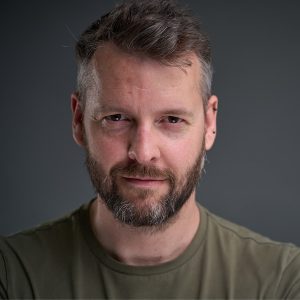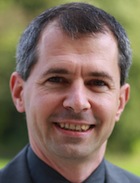
Ivan Pepelnjak, ipSpace (SLO)
Ivan Pepelnjak je naš daleč najbolj prodoren in ustvarjalen vrhunski strokovnjak s področja omrežnih tehnologij tako na področju WAN in LAN omrežij. Z omrežnimi tehnologijami se ukvarja že od leta 1985. Je eden prvih v svetu in nasploh slovenskih inženirjev, ki so si pridobili najprestižnejšo certifikacijo v industriji Cisco Certified Internetwork Expert (CCIE 1354). Ivan je znan je po številnih knjigah, člankih in objavah. Je redni pisec spletnega dnevnika ipSpace, kot tudi avtor svetovno znanih istoimenskih webinarjev s področja omrežne in strežniške virtualizacije, oblačnih storitev, SDN, VPN, IPv6 in arhitekture podatkovnih centrov. Kot dolgoletni strokovnjak in odličen poznavalec omrežnih tehnologij je zelo zaželjen in iskan po vsem svetu bodisi kot predavatelj ali kot svetovalec pri postavitvi novih podatkovnih centrov ali designa omrežij. Ivan je tudi gostujoči profesor na Fakulteti za računalništvo in informatiko Univerze v Ljubljani (FRI), kjer poučuje razvoj in design spletnih aplikacij, v svojem prostem času pa znan kot zagrizen športnik in ljubitelj alpinizma, kolesarjenja in turnega smučanja.
About the talk: Have you ever heard someone complaining that they can’t work with BGP or IS-IS because “these technologies are too complex” and “they have no hands-on experience”? Well, the free online labs we’ll talk about in this presentation squashed all those excuses (but we all know that procrastinators are unbelievably ingenious).
Alas, not everyone is using the same equipment, so we made those labs run on about a dozen different platforms. That sounds cool, but how do you know the initial configurations on those platforms will be correct? That’s what we’ll discuss in the second half of the presentation.
Tomaž Zaman
Leta 2013 je Tomaž z danskim partnerjem ustanovil spletno dvostransko trznico (two-sided marketplace) Codeable, ki povezuje stranke z WordPress spletnimi stranmi ter izvajalci, ki jim te strani oblikujejo, razvijajo ali posodabljajo. Spletni servis ima danes preko 1000 podizvajalcev ter 40000 strank po celem svetu, prav tu pa se je Tomaz srecal tudi z prednostmi in pomanjkljivostmi odprte kode. Prav zato se je pred dvemi leti, ko je po desetih letih zapustil podjetje, odlocil, da svoje pridobljeno znanje preizkusi se v izdelavi hardwara, in ker je navdusenec nad omrezji, se je odlocil razviti lasten router.
About the talk: Na trgu je ogromno proizvajalcev mrezne opreme, ki pa vecinoma spadajo v dve katergoriji: enterprise in consumer. Zal pa tukaj odpademo t.i. power userji, za katere so enterprise licence predrage za domaco uporabo, consumer oprema pa ni dovolj zmogljiva ter ne podpira vseh funkcionalnosti, ki bi jih zeleli. Ko je Tomaz zacel razglabljati o tej tematiki na svojem YouTube kanalu, je hitro naletel na obilo somisljenikov, nekaj investitorjev pa se je ponudilo, da bi investirali v projekt, ki bi te probleme naslovil, zato je Tomaz z svojim partnerjem Aljazem ustanovil podjetje ter zacel z razvojem naprave. Ta je trenutno v fazi zacetnega prototipiranja, za projekt pa sta zbrala $300,000. V predavanju bo Tomaz opisal svojo pot do te tocke, prav tako probleme, ki jih resuje s svojim routerjem, kaksno publiko naslavlja ter kaksni izzivi nastajajo pri projektu, kot je njegov.
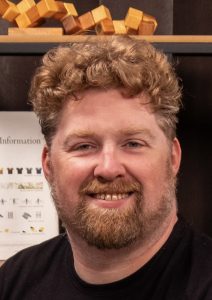
Sander Steffann, RIPE NCC Executive Board
Sander Steffann is an Internet specialist from The Netherlands. He started a small ISP in his home town in 1995, the same year he began studying computer science at the University of Twente. Since 2010 he is a self employed consultant.
He has been involved in all aspects of the Internet. On the technical side he has done sysadmin, routing, security, DNS, web hosting, email, software development etc etc. From architecture and design down to hands on deployment and debugging the underlying code (you had to in 1995…).
On the non-technical side he has been one of the chairs of the RIPE Address Policy Working Group for 11 years, a member of the RIPE NCC Arbiters Panel, a member of the NRO NC/ASO AC, a founding board member of The Netherlands IPv6 Foundation, a founding board member of the NLNOG Foundation and a founding board member of the Global NOG Alliance. He is currently an Executive Board member of the RIPE NCC.
About the talk: In this presentation Sander will talk about the different organisations involved in Internet Governance, what their responsibilities are and how they work together for the future of the internet
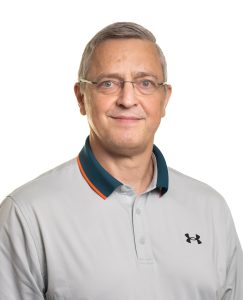
Ulrich Wisser, ICANN
Ulrich WISSER has joined ICANN Org as Regional Technical Engagement Manager for Europe. His main role is to support ICANN org’s technical engagement efforts in the region (trainings, promote DNS standards and best practices, promote research, …). He reports to Adiel Akplogan, VP Technical Engagement at the Office of the Chief Technology Officer.
Ulrich’s professional career prior to joining ICANN included a 15 year tenure at the Foundation for Internet Infrastructre, the Swedish ccTLD (.SE) registry. He has served as Co-chair of the Centr Tech working group and on the DNS-OARC program committee.
He is a 4th degree black belt and licensed judo instructor.
About the talk: DNSSEC has been deployed now for almost 20 years, but unfortunately it is used very sparsely. Until recently the establishment of the chain of trust had to be done out-of-band. But the IETF has defined ways to do it in-band and currently several European ccTLD registries have already set this in production.
We will look at how to automate the establishment of trust in the DNS and possible improvements for the future.
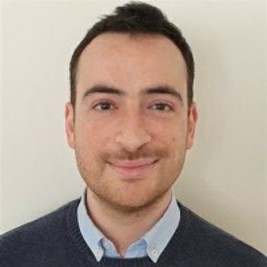
Luca Sani, CatchPoint
Luca Sani received his B.Sc. and M.Sc. in Computer Engineering from the University of Pisa, respectively in 2008 and 2010. In 2014 received his Ph.D. in Computer Science and Engineering from IMT School for Advanced Studies Lucca with a thesis focused on the analysis of the Internet inter-domain ecosystem. From 2014 to 2019 he has been a researcher at IIT-CNR where he mainly worked on the Isolario route collector project, which he co-founded in 2013. He joined Catchpoint in 2019 and is one of the founding members of the Italian team.
About the talk: Traceroute has been helping troubleshoot network issues since the late 80s. In that time, it has become one of the most used tools in Internet measurement and topology discovery. Here at Catchpoint we leverage Linux traceroute to perform measurements from nodes distributed all over the world. In order to do what we do, we’ve enhanced the Linux traceroute to add some useful and interesting capabilities, and made those changes publicly available. In this talk we are going to show how our tool can be used to detect ECN bleaching (and not only) in the wild, showing also the result of a measurement campaign performed from our platform.
The ability to detect ECN support recently has become more and more important due to L4S, a new architecture aimed at reducing loss and latency, for which ECN plays and essential role. The presented tool is open source and can be deployed on other platforms to run similar measurements.
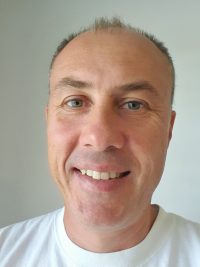
Primož Vidnar, T-2
Primož Vidnar je diplomiral na fakulteti za elektrotehniko, računalništvo in informatiko v Mariboru. Po študiju se je pridružil podjetju T-2 d.o.o. (2006), ki je šele nastajalo . Začel je svoje delo v oddelku za omrežje, kjer je pridobival nova znanja in izkušnje. Ob delu je še končal podiplomski študij na fakulteti za management na Primorskem (2010) (specialist za IT sisteme).
Področja na katerih je aktiven:
- Planiranje in postavitev omrežja (core, access) (L2,L3), (IPv4, IPv6), Traffic engineering
- Troubleshoot different problems on network (routing , switching)
- Tehnična podpora za poslovno prodajo
- Tehnična podpora pri razvoju provisioning aplikacij za tehniko
- RIPE DATABASE administrator (RIPE NCC Certified Professional)
Po duši športnik in tehnik, napogostejše vprašanje kako to deluje 😊. Preprost človek, dober team-player.
About the talk: Implementation of the IPv6 protocol in a live network from Core to Access,… (Dual Stack IPv6/IPv4),…
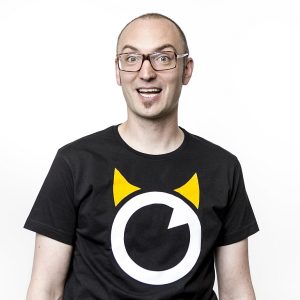
Thomas Weible, FLEXOPTIX
Thomas Weible Co-Founder and CTO of Flexoptix. He formerly lead the groundbreaking software development within the company. Thomas has moved towards the field of transceiver technology and his so called „support-with-no-levels-and-no-bullshit“. Enthusiastic in everything he does, he gives realistic and practical answers to get transceivers working and operational.
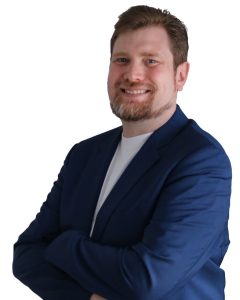
Dr. Gerhard Stein, FLEXOPTIX
Dr. Gerhard Stein is Head of Product Development at FLEXOPTIX, ensuring that innovative and amazing products are brought into the market.
Back in the 1990s, when he was still living in Mexico, he wrote small programs and assembled computers and network systems for customers. After his arrival in Germany, he began studying mechanical and process engineering at the TU Darmstadt, continued this at the Ruhr University Bochum, specialising computational engineering and received his doctorate in the field of simulation technology.
He also develops open source software such as the Commander Genius game engine.
About the talk: With the speed of 400G coherent technology was introduced to pluggable optical transceivers (OIF 400ZR and OpenZR+). This technology is complex and powerful for your network, it even has influence on your network device operating system.

